#precision brass turned components
Text
Precision Brass Parts Manufacturer in Jamnagar India
GK Metals is a leading brass parts manufacturer in Jamnagar, Gujarat, India. With years of experience in the industry, we specialize in producing a wide range of high-quality brass components like brass fittings, brass tubes, brass fasteners and brass valves for various industrial applications.

#brass parts manufacturer in jamnagar#precision brass turned components#brass components manufacturers in jamnagar#brass parts exporters in jamnagar#brass turned parts jamnagar#brass parts suppliers#brass components jamnagar#brass turned components#brass parts#brass components#jamnagar#gujarat#india#metal
0 notes
Text
#precision-cnc-turning#precision-turned-parts#brass-precision-turned-components#custom-precision-machining#precision-turned-components-manufacturers
0 notes
Note
Once upon a time, in a land not so far away, there existed a factory. This factory was like any other factory you might encounter, with long, drab corridors and rows upon rows of machines. But it was not the factory itself that captured the imagination; it was the intricate world of gears that hummed within. Gears, those circular mechanical wonders, were the unsung heroes of this factory. They were everywhere, hidden within the machines, working tirelessly to ensure that everything ran smoothly. These gears came in all shapes and sizes, from the tiniest little pinions to the massive, gnashing teeth of the industrial giants. The workers of the factory rarely paid the gears any mind. To them, gears were nothing more than mundane components, forgotten in the whirlwind of their daily tasks. But if you were to slow down time and take a closer look, you would see that each gear had its own story to tell. Take, for example, a small brass gear nestled deep within a clock. This gear, not much larger than a coin, had been turning steadily for decades, measuring time in meticulous precision. It had witnessed countless moments, from the mundane ticking of hours to the celebration of joyous occasions. It was a silent witness to the passage of time itself. Then there was the steel gear in an old steam engine. Its heavy teeth meshed with other gears, transferring power from the boiler to the wheels. With each rotation, it propelled locomotives across vast landscapes, chugging along to the rhythm of progress. It had seen the world from the tracks, rolling through towns and cities, bearing witness to the changing face of industry. In a corner of the factory, a gear made of bronze tirelessly stirred a massive vat of molten chocolate. Day in and day out, it swirled the sweet concoction, ensuring that it remained smooth and delectable. Generations of children had savored the fruits of its labor, blissfully unaware of the gear's integral role in their favorite treat. As you wandered deeper into the factory, you'd find gears of all kinds engaged in intricate dances of motion. Some gears rotated in harmony, like a well-practiced ballet, while others clanked and shifted with a purpose that defied explanation. Each gear had its place, its function, and its role in the grand symphony of machinery. But perhaps the most remarkable thing about gears was their ability to endure. They were built to last, constructed with precision and care. They weathered the test of time, never complaining, never asking for recognition. They simply performed their duties, day in and day out, in the unending cycle of mechanical life. And so, the factory continued to churn, and the gears continued to turn, hidden away from the world's gaze. To the casual observer, it was a dull place, a world of monotony and repetition. But to those who paused to listen, to those who dared to appreciate the beauty of mechanical simplicity, it was a mesmerizing realm of gears
this was not what I wanted when I asked for anon asks
17 notes
·
View notes
Text
Precision in Motion: Exploring the World of Metal CNC Machining
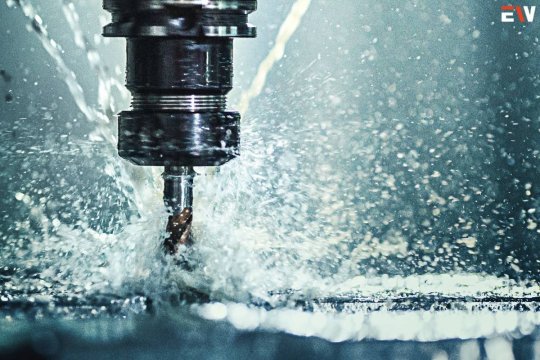
Share Post:
LinkedIn
Twitter
Facebook
Reddit
Metal CNC machining represents the pinnacle of precision engineering, offering unparalleled accuracy, efficiency, and versatility in the fabrication of metal components and parts. In this comprehensive overview, we delve into the intricacies of metal CNC machining, exploring its technology, applications, benefits, and the future of precision manufacturing.
Understanding Metal CNC Machining
CNC (Computer Numerical Control) machining is a manufacturing process that utilizes computerized controls to automate the operation of machine tools, such as lathes, mills, and routers. Metal CNC machining specifically focuses on the fabrication of metal components, utilizing specialized CNC machines equipped with cutting tools to shape and refine metal workpieces with exceptional precision.
Key Components:
1. CAD (Computer-Aided Design)

The design phase begins with the creation of a digital model of the desired part using CAD software. This digital model serves as the blueprint for the machining process.
2. CAM (Computer-Aided Manufacturing)
CAM software translates the CAD model into instructions for the CNC machine, generating tool paths and specifying machining operations such as milling, drilling, and turning.
3. CNC Machine
The CNC machine executes the programmed instructions, utilizing cutting tools to remove material from the workpiece and create the desired shape and features with high precision.
4. Cutting Tools
Various cutting tools, such as end mills, drills, and inserts, are used to remove material from the workpiece during the machining process. These tools are selected based on factors such as material type, geometry, and surface finish requirements.
What are its Applications?
CNC machining finds wide-ranging applications across industries and sectors, including:
1. Aerospace: Precision components for aircraft, spacecraft, and satellites, such as engine parts, structural components, and avionics.
2. Automotive: Engine components, transmission parts, chassis components, and precision tooling for automotive manufacturing.
3. Medical: Surgical instruments, implants, prosthetics, and medical device components require high precision and biocompatibility.
4. Electronics: Enclosures, heat sinks, connectors, and components for electronic devices and consumer electronics.
5. Industrial Manufacturing: Tooling, fixtures, molds, and production components for various manufacturing processes.
Benefits of Metal CNC Machining
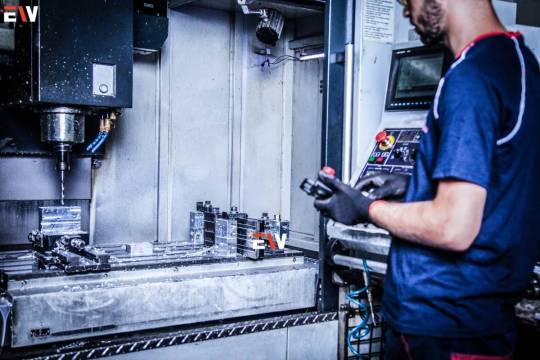
1. Precision and Accuracy
CNC machining offers unparalleled precision and accuracy, with the ability to achieve tight tolerances and intricate geometries that are difficult or impossible to replicate with traditional machining methods.
2. Efficiency and Productivity
CNC machines operate with high speed and efficiency, allowing for rapid production of metal components with minimal downtime and waste. Automated tool changes, material handling, and process monitoring further enhance productivity.
3. Versatility and Flexibility
CNC machining can accommodate a wide range of materials, including metals such as aluminum, steel, titanium, and brass. Moreover, CNC machines are capable of machining complex shapes and features, making them highly versatile for diverse manufacturing applications.
4. Consistency and Repeatability
With CNC machining, each part produced is identical to the next, ensuring consistency and repeatability in quality and performance. This reliability is essential for industries with stringent quality standards and regulatory requirements.
Future Trends in Metal CNC Machining
1. Advanced Materials
As demand grows for lightweight, high-strength materials, such as titanium alloys and composites, metal CNC machining will continue to evolve to accommodate the machining challenges posed by these advanced materials.
2. Additive Manufacturing Integration

The integration of additive manufacturing (3D printing) with CNC machining processes, known as hybrid manufacturing, offers new possibilities for producing complex metal parts with enhanced efficiency and functionality.
3. Smart Manufacturing Technologies
Advancements in automation, robotics, artificial intelligence, and data analytics are transforming CNC machining into a smarter, more interconnected ecosystem, enabling predictive maintenance, real-time monitoring, and optimization of manufacturing processes.
4. Sustainable Practices
With a growing emphasis on sustainability and environmental stewardship, CNC machining will increasingly adopt eco-friendly practices, such as recycling metal chips and coolant, energy-efficient machining processes, and reduction of material waste.
Conclusion
Metal CNC machining stands at the forefront of precision manufacturing, offering unparalleled capabilities, efficiency, and versatility in the fabrication of metal components and parts. From aerospace to automotive, medical to electronics, CNC machining plays a critical role in driving innovation and advancement across industries. As technology continues to evolve and demand for high-quality, custom metal components grows, CNC machining will remain indispensable for delivering precision in motion and shaping the future of manufacturing.
Also Read: Industrial IoT: Transforming Manufacturing through Connected Intelligence
#metalcnc#PrecisionEngineering#manufacturing#Technology#cncmachining#metalfabrication#aerospace#medical#electronics#industrialmanufacturing
0 notes
Text
Comprehensive Guide to Precision Turned Brass Components
Precision-turned components are put through a battery of tests to ensure they meet quality standards. The brass precision-turned components come in various sizes, styles, and models that may be tailored to meet the customer's needs. It has several advantages in the modern industry. Below are the things you need to know about precision-turned brass components:
Types of brass turning:
Turning brass involves using a lathe to spin the metal to form a portion. It can be used to make flat, rounded, or both pieces. The most popular method of turning brass is to reduce a piece of material's outside diameter until it achieves the required size. This can also be applied to holes drilled into an object's center, creating an exterior and an interior feature on the surface. But there are other kinds of brass turning that can be done as well. One can simultaneously turn the ID and OD. Then, you can have a solid portion that tapers at one end expanding the array of possibilities for precision-turned components.
The brass turning process:
If one has the proper tools, turning brass is an extremely easy procedure that anyone can perform. Brass is quite soft, cutting it with a lathe doesn't need much force. The primary objective while turning brass is to avoid overheating it, as this may result in metal distortion.
The first stage in turning brass is heating brass with a torch or blow torch until the whole item is red hot. This will enable them to remove any remaining impurities from the metal without causing surface damage. They will heat the material and then use a tap wrench to smooth off any burrs or other defects from the outside of their product. Lastly, they will use steel wool or sandpaper to polish the completed product until it is glossy and smooth.
What tools are used for brass turning?
Most of the tools used for turning other metals are also used for turning brass. Brass differs because tools created can be used on different materials since it melts at a lower temperature than most other metals. A burr is the most basic tool used in brass turning. This conical-shaped abrasive wheel can remove material from the brass being turned.
Another popular tool for turning brass is known as a lap. This tool resembles a burr, but instead of cutting into the metal surface like a burr, it has two sides: one for polishing or finishing the metal by eliminating any markings left by previous cutting operations.
Other tools are also used in brass turning; these include chucks, which securely hold workpieces and sanding drums which smooth surfaces, and collets, which have cutting tools. Drills and reamers are also employed in this process. The precision-turned components should be brought from reputable manufacturers.
Arek Solutions is a business committed to offering clients worldwide top-notch product supply solutions. With more than 70 years of combined industry experience, they are known for providing top-notch products and services. They are the best option for buying products for your industrial needs.
0 notes
Text
Brass Valve Hot Forging Automation Equipment Craftsmanship And Benefits
Hot forging is a metal forming process that involves heating the brass material to a high temperature and then shaping it using compressive forces. Hot forging for brass valve production enhances the mechanical properties of the brass, resulting in increased strength, durability, and resistance to wear and tear. The hot forging process refines the grain structure of the brass, making it more homogeneous and less prone to defects.
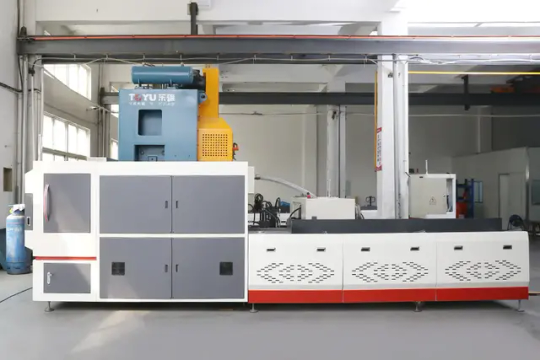
The hot forging process for brass valve creation begins with heating the brass to a temperature between 700°C and 800°C. At this temperature, the metal becomes malleable, allowing it to be shaped into the desired form. The heated brass is then placed into a die, which is a mold that gives the brass valve its final shape. High pressure is applied to the die, forcing the metal to fill the mold cavity and create the desired valve shape.
Hot forging allows for the creation of complex and intricate shapes in brass valves. The high temperature and compressive forces used in hot forging enable manufacturers to achieve precise dimensions and tight tolerances, ensuring that the brass valves meet the required specifications. Compared to other manufacturing methods, hot forging for brass valve production reduces material waste.
The process allows for near-net-shape forging, meaning that the forged brass valve components are close to their final shape, reducing the need for extensive machining and cutting. Hot forging is a cost-effective method for brass valve manufacturing.
The process requires fewer steps and less material compared to other techniques, resulting in lower production costs. Additionally, the improved material properties achieved through hot forging can extend the lifespan of brass valves, reducing maintenance and replacement costs for end-users.To further optimize the brass valve manufacturing process, many companies are turning to brass valve automation equipment. Automation technology offers numerous benefits, Brass valve automation equipment streamlines the production process, reducing the time required for various tasks such as assembly, testing, and packaging. Automated systems can operate continuously, reduce downtime and increase overall productivity.
Automation equipment ensures consistent quality in brass valve production. By eliminating human error and variability, automated systems can maintain tight tolerances and produce brass valves with uniform properties and performance. Brass valve automation equipment reduces the need for human intervention in potentially hazardous tasks, such as handling hot forged components or operating heavy machinery.
This reduces the risk of workplace accidents and injuries. Automated systems can collect and analyze data throughout the brass valve manufacturing process. This data can be used to identify areas for improvement, optimize production parameters, and track quality control metrics, enabling manufacturers to make data-driven decisions and continuously enhance their processes.
1 note
·
View note
Text
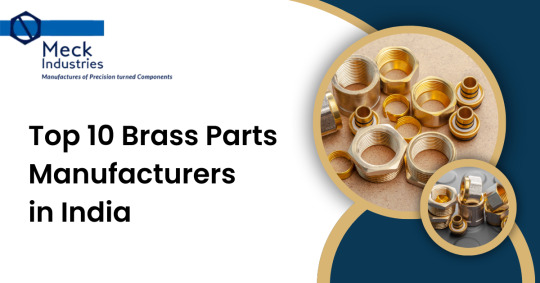
Top 10 Brass Parts Manufacturers in India
Dive into India’s thriving brass parts manufacturing sector, where precision-turned components are Precisely crafted. Brass parts, indispensable across industries like automotive and electronics, boast remarkable attributes including corrosion resistance, high tensile strength, and superior machinability. Meck Industries, Venus Enterprise, and Omax Brass stand out as leading names among India’s top brass parts manufacturers, celebrated for their commitment to precision engineering. These industry stalwarts epitomize excellence in producing customized components that adhere to stringent quality standards. Explore the realm of precision-turned components manufacturers in India to uncover the innovative solutions driving the nation’s manufacturing prowess.
Read More: Top 10 Brass Parts Manufacturers in India
#Top Brass Parts Manufacturers#Best Brass Parts Manufacturers in India#Top Brass Components Manufacturers in India#Best Brass Components Manufacturers in India
0 notes
Text
Brass Turned Components: The Secret Behind Durable and Precision Parts
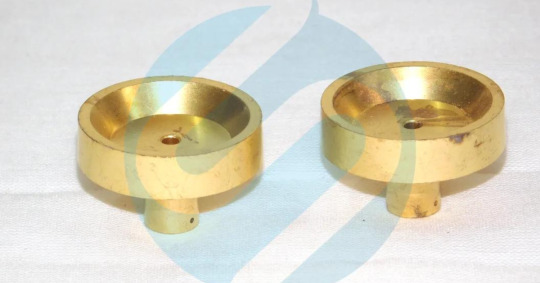
Discover the pivotal role of brass turned components in achieving unparalleled durability and precision across various industries. These components, crafted from the highly versatile brass alloy, embody a synthesis of strength, precision, and aesthetic elegance. Let's delve into the core advantages they offer:
Unmatched Strength and Resistance:
Corrosion Resilience: Brass's resistance to rust and corrosion ensures components retain their functionality and appearance over time, even in harsh conditions.
Wear Resistance: Ideal for parts subject to friction and wear, extending their service life.
Precision Engineering Made Simple:
Complex Geometries with Ease: The superb machinability of brass allows for the creation of intricate designs without compromising on accuracy.
Smooth Finishes: Achieve superior surface finishes, reducing the need for extensive post-processing.
Aesthetic Advantage:
Timeless Elegance: The natural luster of brass enhances the visual appeal of parts, making them not just functional but also attractive.
Eco-friendly and Sustainable:
Highly Recyclable: Brass can be recycled repeatedly without degradation, supporting sustainable manufacturing practices.
Eco-Conscious Choice: Opting for brass helps in reducing the environmental footprint by minimizing waste and the consumption of new resources.
Brass turned components are indeed the secret ingredient to creating parts that offer both durability and precision. Their wide-ranging benefits underscore brass's prominence as a material of choice for engineers and designers aiming to elevate the quality and sustainability of their projects. Whether it's in the realms of automotive, electrical, or decorative applications, brass turned components stand out as a testament to the alloy's remarkable properties.
0 notes
Text
Brass CNC Turned Parts and Components Manufacturer in India
GK Metals is Jamnagar, India based manufacturer, supplier and exporter of high-quality customized brass CNC turned parts, brass CNC turned components and brass CNC machining parts with great precision & accuracy. Our CNC turned parts are made from brass, copper, bronze and stainless steel materials.
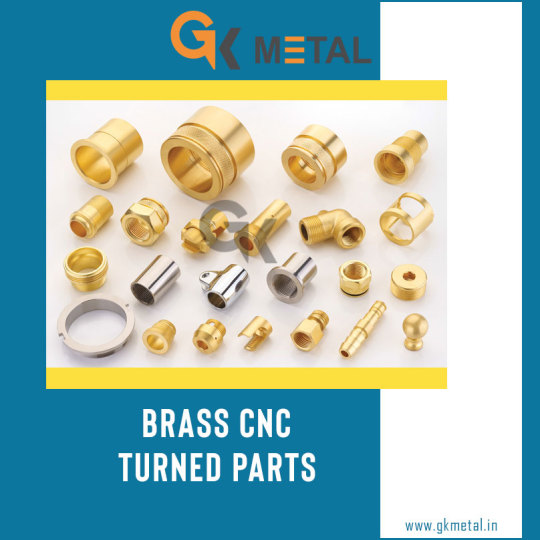
#brass cnc turned parts#brass cnc turned components#brass cnc machining parts#customized brass cnc turned parts#brass cnc turned parts manufacturers#brass cnc turned components manufacturers#brass#brass parts#brass components#gk metals
0 notes
Text
BRASS PRECISION TURNED COMPONENTS
Brass Precision Turned Components: Crafting excellence with meticulous precision, our range of Brass Turned Components offers unparalleled quality and reliability. From intricate designs to standardized parts, our expertise ensures superior performance in every brass turned component.
0 notes
Text
Precision Crafted: Brass Turned Parts for Exceptional Performance
Discover the epitome of precision engineering with our Brass Turned Parts. Meticulously crafted to exact specifications, our brass components ensure unparalleled performance and durability. Whether for industrial machinery, automotive applications, or intricate electronic devices, our precision turned parts deliver reliability and efficiency. Explore our comprehensive range of brass components today and elevate your engineering projects to new heights of excellence.
0 notes
Text
Parish Engineering: Your Trusted Partner For Precision CNC Machining In Melbourne
At Parish Engineering, we pride ourselves on delivering top-quality, precision-manufactured turned components to a wide variety of industries. As a leading provider of CNC machining services in Melbourne, we utilize the latest technologically advanced Swiss-style sliding headstock and multi-axis CNC machines to produce components that meet or exceed the highest standards of accuracy and functionality.
With our team of highly skilled engineers and state-of-the-art equipment, we are able to offer competitive pricing without compromising on quality. We specialize in machining intricate, small and slender components for a range of materials including Mild Steels, Stainless Steels, Brass, Copper, Titanium, and other exotic materials.
Whether you require simple or complex turned components, Parish Engineering has the expertise and resources to get the job done efficiently and cost-effectively. Contact us today to discuss your CNC machining needs in Melbourne.
0 notes
Text
#precision-machined-components-manufacturers#small-parts-machine-shop#machining-companies-near-me#brass-precision-turned-components#aluminium-turned-parts#best-prototype-companies
0 notes
Text
Fundamentals of the Thread Ball Valve Design
At the core of a lead-free brass thread ball valve lies a design that combines simplicity with efficiency. The valve consists of a hollow sphere or "ball" with a hole bored through the center. This ball is positioned within the valve body, and a handle is connected to it. When the handle is turned, the ball rotates, either allowing or blocking the flow of fluid through the valve. This straightforward mechanism offers precise control over the flow, making these valves suitable for a wide range of applications.
Lead-free brass ensures that the water flowing through the valve remains free from this harmful substance, aligning with stringent regulatory standards and prioritizing the health and safety of end-users.
The production of lead-free brass thread ball valves involves precision machining to ensure ideal performance. The valve components, including the ball, stem, and body, undergo meticulous manufacturing processes to achieve tight tolerances and seamless operation. This precision is critical for preventing leaks, maintaining efficiency, and extending the lifespan of the valve. As a result, users can rely on lead-free brass thread ball valves for consistent and dependable fluid control.
0 notes
Text
Manufacturers Of Best Brass Turned Parts
Discover excellence in precision engineering with our esteemed manufacturing team specializing in the production of the finest Brass Turned Parts. As leaders in the industry, we take pride in delivering unparalleled quality, reliability, and precision in every brass component we produce.
0 notes
Text

Elevate your connections with best-in-class Fitting Solutions by ATFIT, featuring Brass Compression Fittings, Pipe Fittings, and Precision Turn Components designed for secure connections and optimum efficiency across diverse applications.
#atlasmetal#atlas metal industries#Atfit#Pipeline#Safety#Temputures#HighPressure#Manufacturing#Adaptors#PremiumQuality#Manufacturers
0 notes